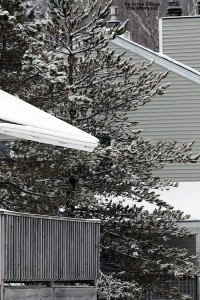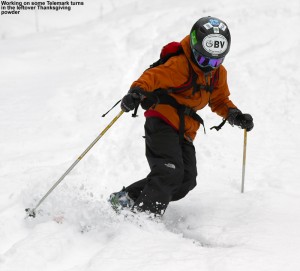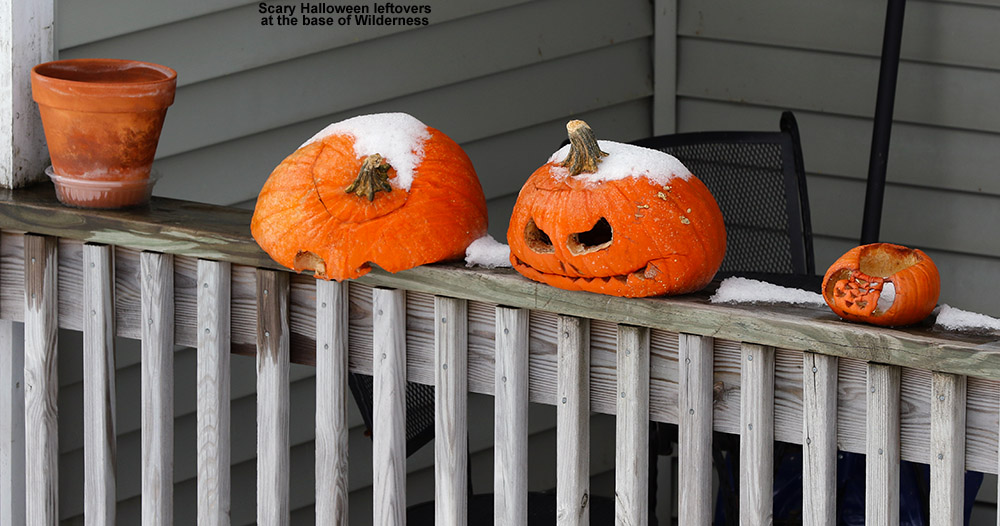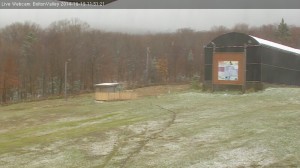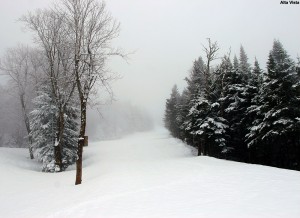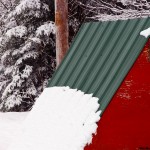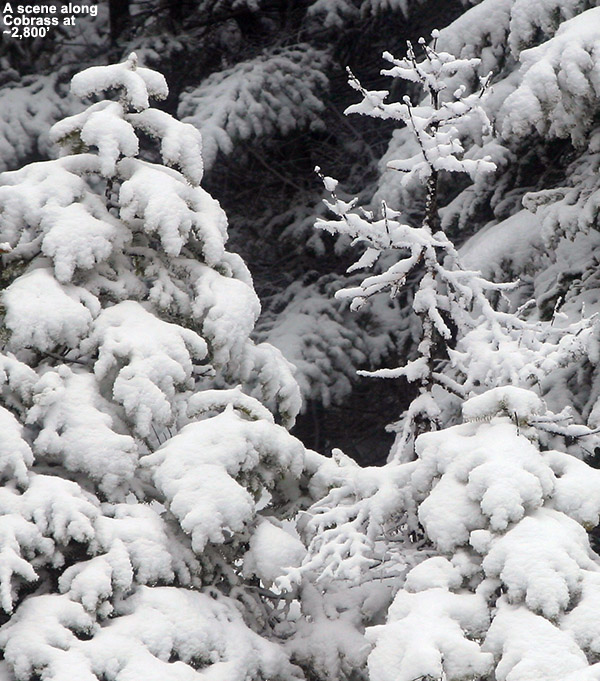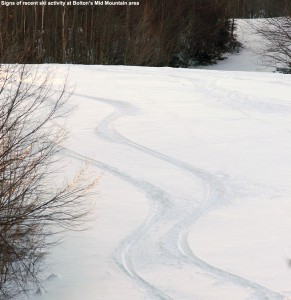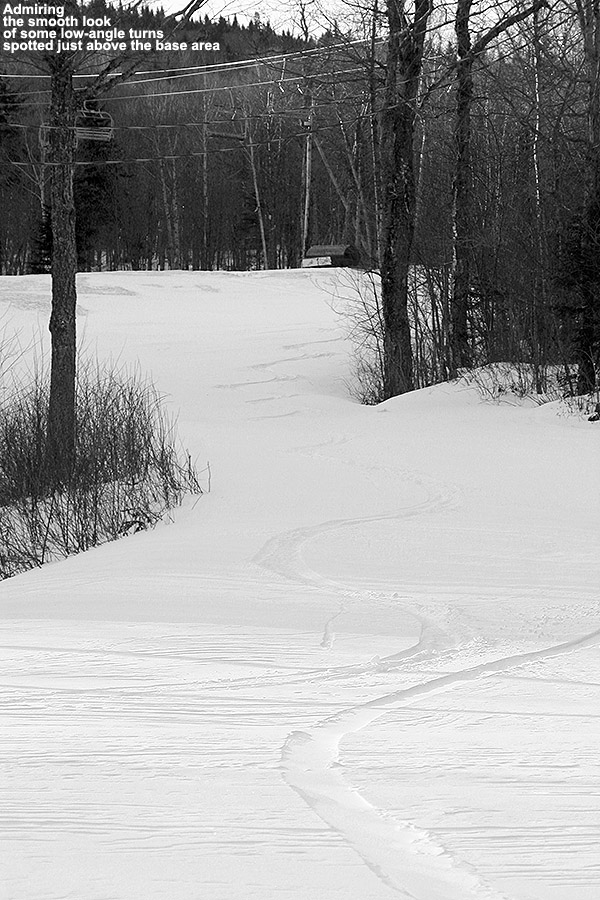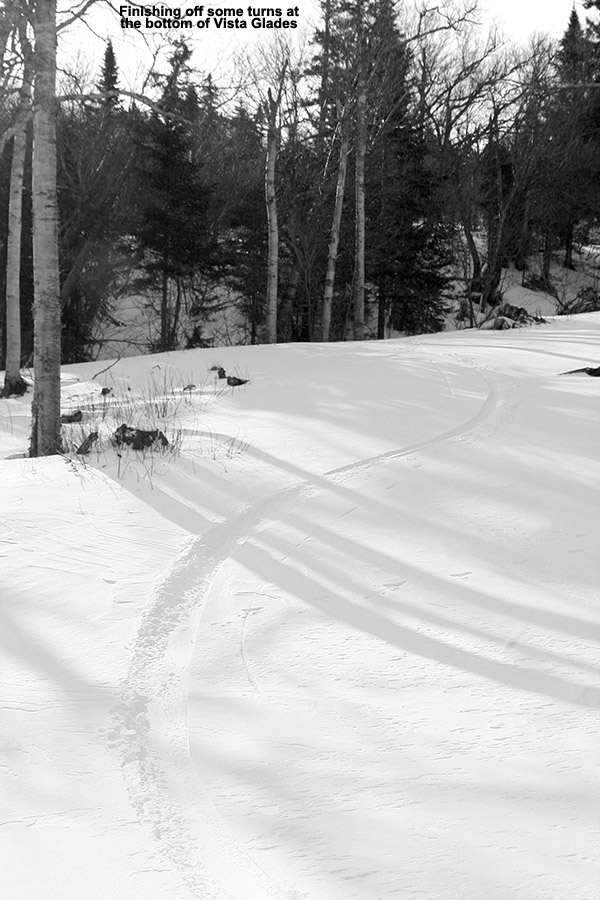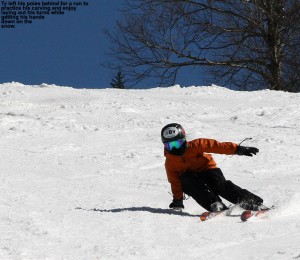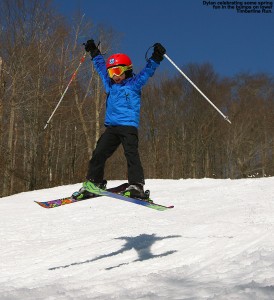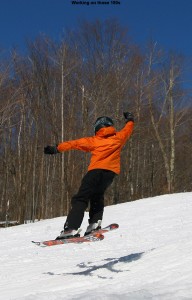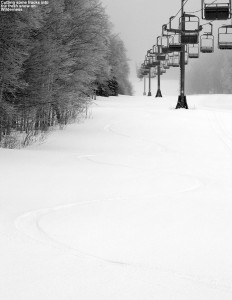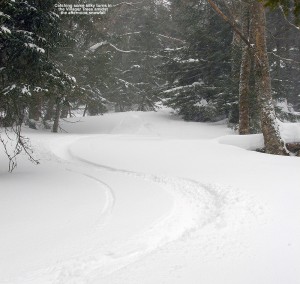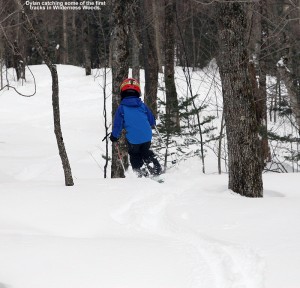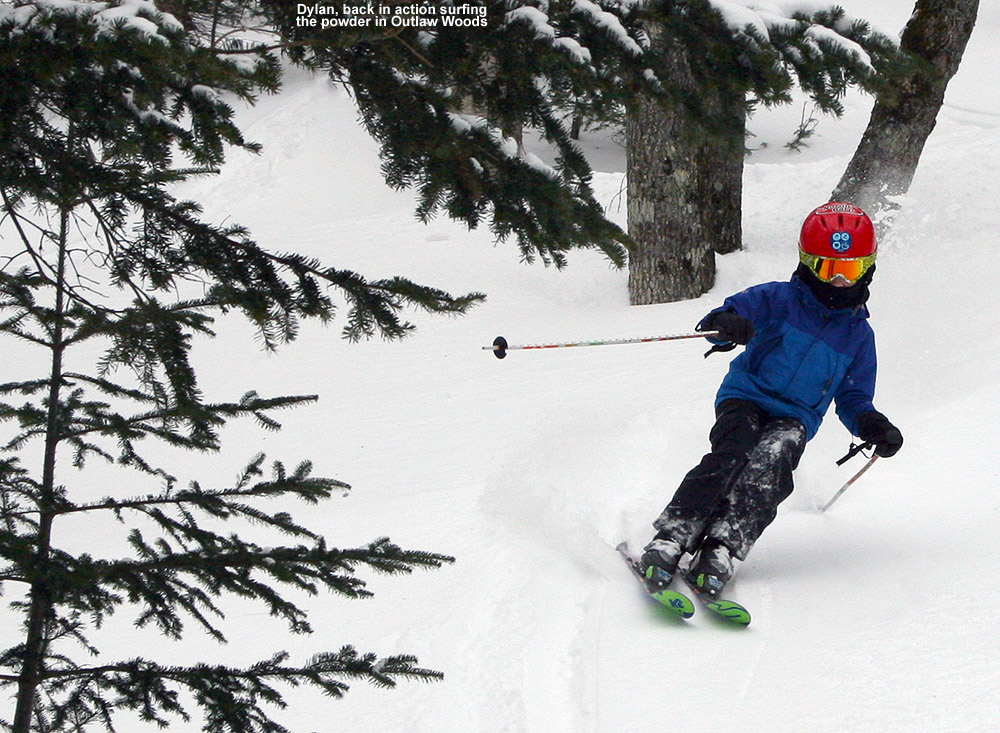
‘Tis the season for being very busy around our house, but the boys and I did find a bit of time to head up to the mountain this afternoon to see what Winter Storm Damon had done for the slopes. We’ve had some periods of sun this weekend, such as the ones we experienced at Stowe yesterday, but temperatures have been staying generally at or below freezing in the mountains to keep the recent snow in midwinter form. So, we anticipated finding some great conditions today on the slopes of Bolton Valley, which thanks to winter storm Damon, has most of its terrain open on the main mountain. A couple feet of dense snow can do that.
“With 2 to 2 ½ feet of dense snow, the ascent was easily twice as hard as it would have been on skins.”
Low clouds hung over the upper half of the mountain as we rode that Vista Quad, and being well into the afternoon, the mountain was really starting to quiet down. The overall feel at the resort was exactly in line with one of those dark December days; the base was plentiful, the snow surfaces were well preserved, and the low clouds seemed to lock in an intimate feeling across the mountain. It’s the holiday season before the commotion of the main holiday week, and with the current amount of terrain and quality of snow surfaces available, it’s a great time to be skiing the resorts around here in Northern Vermont.
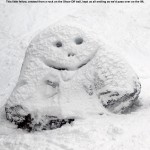 The coverage and snow quality was saw from the lift looked simply outstanding, even on the steep trails of the upper mountain, so the boys and I jumped right onto Hard Luck to test out the snow with some real pitch. All you can say is that Damon set down a really solid resurfacing – there’s just a lot of deep, dense snow out there. You can just carve the surface snow away and be confident that there’s simply more of that below. The only real downside that I’ve seen from the storm was that the powder skiing hasn’t been quite up to the quality we typically get around here with lighter snow. The rounds of fluffy snow at the end of the storm cycle weren’t quite substantial enough to keep you off of the denser snow below, so you’re still getting into that thicker stuff, and of course it doesn’t ski like champagne powder. Still, I don’t think I’d trade this recent storm for fluffier powder; it was just too perfect for setting up the core of this season’s base snow.
The coverage and snow quality was saw from the lift looked simply outstanding, even on the steep trails of the upper mountain, so the boys and I jumped right onto Hard Luck to test out the snow with some real pitch. All you can say is that Damon set down a really solid resurfacing – there’s just a lot of deep, dense snow out there. You can just carve the surface snow away and be confident that there’s simply more of that below. The only real downside that I’ve seen from the storm was that the powder skiing hasn’t been quite up to the quality we typically get around here with lighter snow. The rounds of fluffy snow at the end of the storm cycle weren’t quite substantial enough to keep you off of the denser snow below, so you’re still getting into that thicker stuff, and of course it doesn’t ski like champagne powder. Still, I don’t think I’d trade this recent storm for fluffier powder; it was just too perfect for setting up the core of this season’s base snow.
The powder was still skiing reasonably well for being rather dense, so we headed over to Wilderness on our next run to get into some untracked snow. Although we were only skiing in the top few inches of the snow, untracked areas were silky smooth and a lot of fun. It was enough fun that when I asked the boys if they wanted more, I was hit with a resounding, “Yes!”
 With that in mind we set off on the next run for the summit of Wilderness. There was a skin track in place for the ascent, and a bit of a boot track that comingled with the skin track in places, but that boot pack wasn’t very well established. Since we hadn’t brought our skins, that meant we had to go the boot pack route, which was a real slog at times. The rudimentary boot pack that was in place helped us some, but it contained plenty of post holes that required extra effort to climb out of, and then there were times when I’d post hole my way into the snow unexpectedly, which is always a big waste of energy. With 2 to 2 ½ feet of dense snow, the ascent was easily twice as hard as it would have been on skins. I made sure to explain to the boys that this was the perfect example of why you want to skin up the mountain whenever possible vs. trying to walk in your boots.
With that in mind we set off on the next run for the summit of Wilderness. There was a skin track in place for the ascent, and a bit of a boot track that comingled with the skin track in places, but that boot pack wasn’t very well established. Since we hadn’t brought our skins, that meant we had to go the boot pack route, which was a real slog at times. The rudimentary boot pack that was in place helped us some, but it contained plenty of post holes that required extra effort to climb out of, and then there were times when I’d post hole my way into the snow unexpectedly, which is always a big waste of energy. With 2 to 2 ½ feet of dense snow, the ascent was easily twice as hard as it would have been on skins. I made sure to explain to the boys that this was the perfect example of why you want to skin up the mountain whenever possible vs. trying to walk in your boots.

After a brief break at the summit, we descended via Bolton Outlaw in the gathering dusk. The powder was dense like we’d experienced elsewhere, but there were plenty of good turns to be had. This is where the boys would have profited from having their powder skis, but they were on their regular carving alpines based on the fact that we’d planned on mostly on piste skiing. Dylan had a couple of prereleases that send him crashing into the powder, and I’m sure the skinnier nature of the skis wasn’t helping the matter. But some good turns were had by all, despite the fact that it was really dark and foggy as we descended the lower half of the mountain.
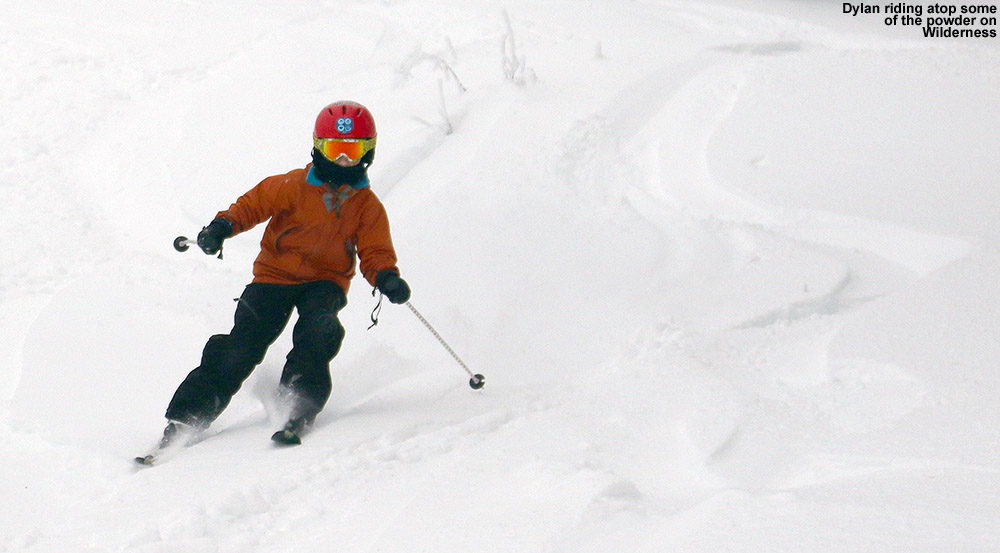
I had to head off to a Christmas party once we got home, so I’d actually tried to call in a pizza order from Fireside Flatbread for E and the boys when I was up on the Wilderness Summit. I didn’t have a great signal, but it didn’t matter… unfortunately they don’t open until Friday. I ordered instead from Zachary’s in town, but it meant we had to go a couple miles past the house. The James Moore Tavern seemed to be running at full steam tonight though, so that’s currently an option for those seeking après ski fare.
On the weather front, it looks like we’ve got a weak system coming through in the midweek period, and the models show the potential for another storm toward the end of next weekend, but that’s a long way out so we’ll have to see what develops with that one over the next several days.









